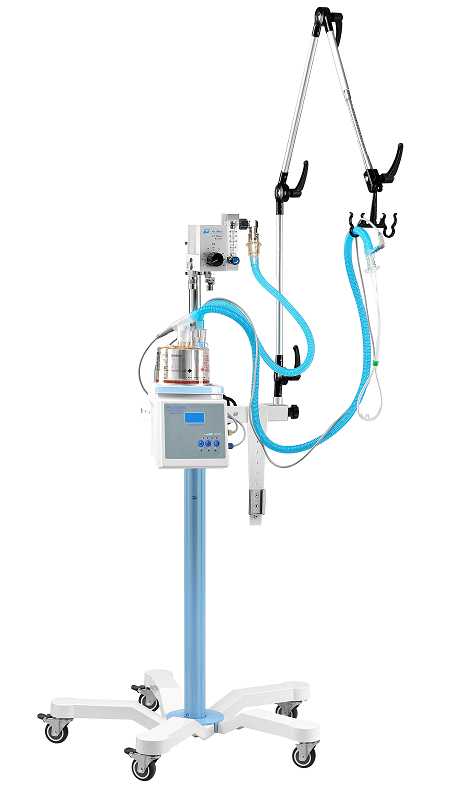AD-I HFNC CPAP
Nasal high-flow oxygen therapy is a new respiratory treatment program. It provides accurate oxygen concentration and high-flow mixed gas through a high-flow air-oxygen mixer, and is delivered to the patient through a nasal congestion device after being fully heated and humidified. This program provides an appropriate treatment for patients with mild to moderate hypoxemia . HHFNC is a non-invasive respiratory support mode, which realizes respiratory support by flushing the anatomical invalid cavity of the nasopharynx, giving warm and humidified gas to reduce metabolic work, and providing positive airway pressure. HHFNC is easy to operate and care for, and it is well tolerated by children, and it has a wide range of clinical application value.
Features
1.Compared with traditional oxygen therapy, it realizes controllable temperature, humidity and oxygen supply
2.Easy to use, easy to tolerate, provide flow and oxygen concentration that do not affect each other
3.When the patient is weaned or the condition changes, the treatment is variable and continuous
4.While ensuring the flow, there is no need to completely seal the nostrils, which improves the patient's tolerance
5.Smaller interface, no need for multiple devices and treatment interface switching, promote oxygenation and reduce WOB
6.Improve airway mucous clearance and improve comfort
7.Reduce dead space in nasopharynx and provide low level of positive pressure
8.Get the same effect of low-level CPAP
composition
Air-oxygen mixer
Heated humidified water tank
Breathing tube (built-in heating circuit)
Nasal congestion connected to the patient
Optional
Optional medical air compressor
Clinically indicated
1. After the high-flow gas enters the pharynx through the nose, a fresh gas storage room will be created due to the scouring effect, which can reduce carbon dioxide and then inhale;
2. The high-flow gas is close to the patient's peak inspiratory flow, and it is no longer necessary to inhale some additional air from the air as a supplement, so the patient's actual inhaled oxygen concentration (FiO2) is more reliable;
3. High-flow gas delivery can reduce the patient's inspiratory work and provide low-level respiratory support;
4. High-flow gas can generate low-level positive airway pressure, thereby increasing the average tunnel pressure throughout the breathing cycle.
> 3618med
> merchants recruiting net
>Made in China


